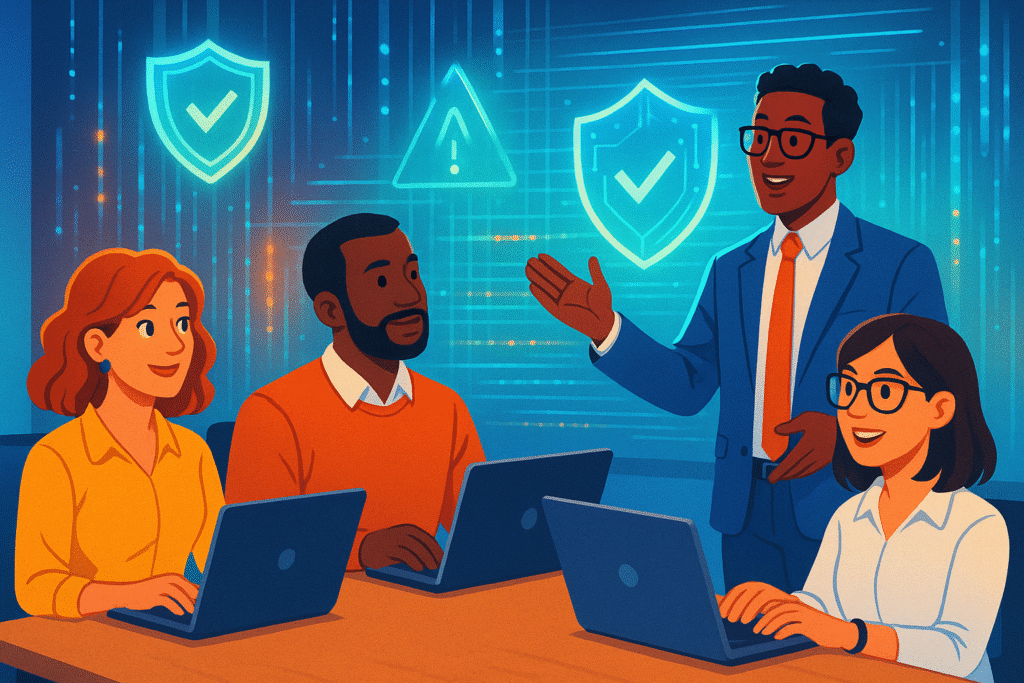1. Phishing and Social Engineering
Why it matters:
Phishing remains the #1 cause of breaches worldwide. Attackers use emails, SMS, AI capabilities and even phone calls to trick employees into revealing credentials or installing malware.
What to train:
-
Recognizing suspicious emails and messages
-
Not clicking on unknown links or attachments
-
Reporting suspicious communications
2. Password Management
Why it matters:
Weak or reused passwords are easy targets for hackers using credential stuffing and brute-force attacks.
What to train:
-
Creating strong, unique passwords
-
Using password managers
-
Enabling multi-factor authentication (MFA)
3. Data Privacy and Protection
Why it matters:
With regulations like GDPR and CCPA, mishandling personal or sensitive data can have legal and financial consequences.
What to train:
-
Identifying confidential information
-
Secure storage and transmission
-
Data minimization and disposal practices
4. Safe Use of Devices and Remote Work Security
Why it matters:
With remote and hybrid work now the norm, unsecured devices and networks can be an easy entry point for attackers.
What to train:
-
Updating and securing work devices
-
Avoiding public Wi-Fi for business tasks
-
Secure use of collaboration tools
5. Incident Reporting and Response
Why it matters:
The sooner you know about a potential breach, the better your chances of stopping it.
What to train:
-
Recognizing and reporting incidents
-
Understanding response steps
-
Whom to contact in case of a suspected attack
Conclusion
A well-trained workforce is your best cyber defense. Regular, engaging training sessions ensure your team can recognize threats and act quickly. Make cybersecurity a core part of your company culture—your data, reputation, and customers will thank you.
Want to empower your team?
Get in touch to learn more about our interactive cybersecurity training programs or sign up for monthly security tips!

